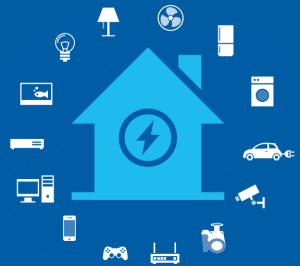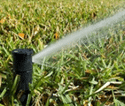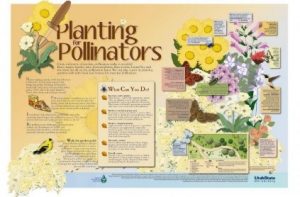What You Can Do about Climate Change?
Climate change is everyone’s problem, but who should do something about it? Individuals changing their lifestyles, or governments leading the way? Well Both!
Decisions that we all make today can shape the world for decades and even centuries to come. Not only are these actions good for the environment, but they are also good for personal and community health, equity, environmental justice, quality of life, and our shared futures.
Many in the scientific community are doing their part, but everyone can help limit climate change. From the way we travel, to the electricity we use and the food we eat, we can make a difference. So yes, actually individual responsibility is essential to solving Climate Crisis. To be climate conscious citizen first calculate your household’s Carbon footprint.
To keep global warming within the limit of 1.5 °C as per Paris agreement, our lifestyle climate footprint should amount to a maximum of 2.5 tons per person per year by the year 2030, with further reduction to 0.7 tons by 2050.
Here are some reputable sources where you can start your Carbon Emission journey!
Calculate your Carbon Footprint
1.Use an online tool to calculate and track your carbon footprint by Nature, conservancy@nature_org
2.Use EPA’s Household Carbon Footprint Calculator to estimate your household greenhouse gas emissions resulting from energy use, transportation, and waste disposal. This tool helps you understand where your emissions come from and identify ways to reduce them.
3.The Lifestyle Calculator was designed to offer consumers an intuitive, fast way to measure their impact – and hopefully make lifestyle changes based upon their findings. These changes may seem small, but they all add up to make a big difference. https://doconomy.com/lifestyle-calculator/
Once you know your Carbon footprints you can take personal action to reduce your carbon footprint by taking any of the following actions.
1. Energy
Use Energy wisely and save money too!
Warm your home efficiently. Here are some simple steps you can take.
We all need to keep our homes warm in winter and cool in Summer. Consider making small behavior changes. Together, they can really add up.
- Draft-proof your home. Winterize your home. Drafts can waste five to 30 % of a home’s energy. Try testing doors, windows and chimneys with incense. Where the smoke wavers, a draft is blowing in. To seal leaks, make or buy a “door snake” and caulk and weather strip doors and windows. You can also add small insulating covers underneath the wall plates of the electric outlets on outside walls, or adjacent to cold basements and crawl spaces.

- Insulate your windows. Hang heavy curtains to keep the cold out and the cozy in. An even cheaper solution is to apply insulation film, available at most hardware stores. This plastic shrink film is easy to apply and keeps in much of the heat that would otherwise escape through windows.
- Reverse your ceiling fans. Many ceiling fans have a reverse mode. When they turn clockwise, they push down the warm air that pools near the ceiling and circulates it through the room. Magic!
- Change your furnace filters. Dirty filters restrict airflow and increase the energy demand of your furnace by making it work harder. Make sure to replace your furnace filters at least every three months during the heating season or ask your landlord to. Better indoor air quality is a nice side benefit of this energy-saving ip. Also, consider switching to a washable filter, which will reduce waste and is more effective.
- Heat the people not the space. Keeping people warm is much more efficient than heating a whole space. Put on a sweater and slippers. Use an electric heat blanket or hot water bottle. Drink hot drinks. Get cozy
- To keep out the heat of the summer sun, close window shades and drapes in warm weather. During cold weather, take advantage of the sun’s warmth by keeping drapes open during daylight hours.
Lighting:
- Lighting is one of the easiest places to start saving energy. Replacing your five most frequently used light fixtures or the bulbs in them with ENERGY STAR certified lights can save nearly $45 a year in energy costs and reduce your Carbon footprint. A 10-watt LED that replaces your traditional 60-watt bulb will save you $125 over the lightbulb’s life.
- ENERGY STAR certified LED light bulbs provide high-quality light output, use up to 90% less energy, and last 15 times longer than standard bulbs, saving money on energy bills and replacement costs.
- A single light bulb that has earned the ENERGY STAR prevents, on average, 795 pounds of greenhouse gas emissions over its lifetime.
Cooling:
- When shopping for Refrigerators, look for the ENERGY STAR certified model. They use 9 % less energy than standard models and on average, cost less than $70 per year to run, better materials and clearer instructions to improve sealing and insulation around the unit, so costly and uncomfortable air leaks are minimized.
Clothes Drying:
- Don’t over dry your clothes. A dryer operating an extra 15 minutes per load can cost you up to $34, every year. If possible, hang-dry your clothes them to air dry naturally or outside in the Sun. Skip ironing the clothes. Hang-dry your clothes instead of using the dryer. There are more than 90 million clothes dryers in the United States, and if all Americans line-dried for just half a year, it would save 3%of the country’s total residential output of carbon dioxide.
- One of the easiest things you can do to increase drying efficiency is to clean the lint trap before each and every load. The lint trap is an important energy saver. This step also can save you up to $34 each year.
Smart Thermostats:
- For the average American household, almost half the annual energy bill goes to heating and cooling – more than $900 a year!
- Install an ENERGY STAR certified smart thermostat. can save approximately $100 a year. Simply adjust your thermostat to run 2 degrees cooler in the winter and 2 degrees warmer in the summer.
- It can reduce your heating and cooling bill by more than 8% and save you about $50 a year, on average. If the home is unoccupied much of the day, can save approximately $100 a year.
Electronics: Pull the plug(s)

- Electronics play a large role in your home’s energy consumption. A home equipped with televisions, computers, a Blu-Ray player and a sound bar that have earned the ENERGY STAR can save nearly $140 over the life of those products.
- Don’t leave fully charged devices plugged into your home’s outlets. This “idle load” across all U.S. households adds up to the output of 50 large power plants in the U.S. Unplug rarely used devices. Unplug computers, TVs and other electronics when you’re not using them. The result? Money and CO2 saved.
- Using a power strip for your computer and all peripheral equipment allows you to completely disconnect the power supply from the power source, eliminating standby power consumption.
Generate your own electricity with renewable energy

- Saving energy and using cleaner energy (solar, wind, geo-thermal) sources is one of the most cost-effective ways to reduce greenhouse gases and help combat climate change. Currently much of our electricity and heat are powered by coal, oil and gas (Fossil fuels).
- Choose a utility company that generates at least half its power from wind turbines or solar panels and has been certified by Green-e Energy, an organization that vets renewable energy options. if that isn’t possible for you, take a look at your electric bill; many utilities now list other ways to support renewable sources on their monthly statements and website.
- If you’re on the main Grid, you sell the extra electricity. If not, you can secure your electricity supply.
- You can also claim federal tax credits for many energy-efficiency home improvements.
Invest in Energy-efficient Appliances:
- It’s easy to cut the energy used by appliances. When shopping for Refrigerators or Washing Machines look for the STARcertification label on energy-efficient including products, including lighting, heating and cooling equipment, electronics, and office equipment.
- Visit Product Finder to find products and where to buy them. In addition to saving, your money on energy bills, many utilities offer rebates on ENERGY STAR certified products, which you can find through Rebate Finder.
- Some even offer federal tax credits. It’s easy to cut the energy used by appliances.
- Since they were first implemented nationally in 1987, efficiency standards for dozens of appliances and products have kept 2.3 billion tons of carbon dioxide out of the air. That’s about the same amount as the annual carbon pollution coughed up by nearly 440 million cars.
2. WATER

- Next to Air we breathe, water is most important element for the preservation of life. Although the Earth’s surface is 2/3 water, less than 3% is drinkable fresh Humans need water to survive – and not just fresh water for drinking. We rely on different kinds of water for a huge range of services and products, from sanitation and healthcare through to growing food crops and making clothes but pollution in the world’s rivers, streams, and lakes renders water undrinkable and harms local wildlife.
- Access to freshwater will be a defining issue for future generations. Today, around 1 in 3 people live without safe drinking water, and global water demand is expected to increase by more than 50 percent by 2040. As the planet’s climate changes and the population rises, up to 5.7 billion people could be living in areas where water is scarce for at least one month a year by 2050. Pumping water requires enormous amounts of electricity. Addressing leaks in water-distribution networks, especially in cities, can curb water loss, energy use, and emissions.
Here are some of the actions you can take to save water in your daily lives.
Take shorter showers and install water-saving shower heads or flow restrictors
- Shower vs. Bath: A typical shower uses 5 to 10 gallons of water a minute. Limit your showers under five minutes which can help save gallons of water and energy. With a new 2.5 gallon-per-minute (low-flow) shower head, a 10-minute shower will use about 25 gallons of water, saving you five gallons of water over a typical bath.
- Consider installing low-flow showerheads that will cut your shower flow to about three gallons a minute which will save water. Not only do they save energy and money, up to $145 each year on but you can take them with you when you move.
- To avoid moisture problems, control humidity in your bathroom by running your ventilating fan during and 15 minutes after showers or open windows.
Turn off the water while brushing your teeth or while shaving
- Before brushing, wet your brush and fill a glass for rinsing your mouth. Fill the bottom of the sink with a few inches of warm water in which to rinse your razor.
Use your Dishwasher and Washing Machine for full loads only
- Dishwasher: When purchasing new dishwasher or washing machine, look for the Water Senseand ENERGY STAR certified label to save water, energy, and money. Your automatic washer uses 30 to 35 gallons per cycle. To make the most efficient use of your dishwasher’s energy and water consumption, run the dishwasher accumulated for a full load. Save water by scraping dishes instead of rinsing them before loading in the dishwasher and use the air-dry option if available
- The EPA estimates that if just one out of every 100 American homes were retrofitted with water-efficient fixtures, about 100 million kilowatt-hours of electricity per year would be saved—avoiding 80,000 tons of global warming pollution
Clothes Washing
- Wash your laundry with cold water or 30°C whenever possible. To save water, try to wash full loads or, if you must wash a partial load, reduce the level of water appropriately Hang them to air dry in natural Sun light and skip ironing. Hot water heating accounts for about 90 percent of the energy your machine uses to wash clothes — only 10 percent goes to electricity used by the washer motor. Washing full loads can save you more than 3,400 gallons of water each year.
Fix-the-leak: Check your toilet, faucets and pipes for leaks. Stop using your toilet as wastebasket
- Check for water leaks in your home and workplace. Did you know a leaky toilet can waste 200 gallons of water per day? Luckily, leaks from toilets, faucets, and pipes are often easy to detect and fix Every cigarette butt or tissue you flush away also flushes away 5-7 gallons of water.
Don’t let the faucet run while you clean vegetables or washing dishes by hand.
- Rinse your vegetables instead in a bowl or sink full of clean water. If you have two sinks, fill one with rinse water. If you have only one sink, first gather all your washed dishes in a dish rack, then rinse them quickly with a spray device or a pan of water.
Water your lawn only when it needed and Deep-soak your lawn
- Huge lawns use a lot of water to maintain, so consider addingdrought-tolerant plants in order to reduce your water consumption by 50 to 75 %, Put a layer of mulch around trees and plants. Mulch slows the evaporation of moisture. See EPA’s Water-Smart Landscape guide for more tips.

- When you do water your lawn, water it long enough for water to seep down to the roots where it is needed. A light sprinkling that sits on the surface will simply evaporate and be wasted. Early morning is better than dusk since it helps prevent the growth of fungus. Adapt by improving how you collect and store water on your land. Slow it down and harvest it with ponds, tanks, wetlands, swales and trees. Harvest rainwater from your roof.
3. Transportation
Greenhouse gas (GHG) emissions from transportation account for about 29 percent of total U.S. greenhouse gas emissions, making it the largest contributor of U.S. GHG emissions.
Here are some ways you can reduce your emission.
Green your commute
- The world’s roadways are clogged with vehicles, most of them burning fossil fuel like diesel or gasoline. Walking or riding a bike to work or school instead of driving will reduce greenhouse gas emissions — and help your health and fitness.
- Share your rides – Cars cause a sixth of US and EU carbon emissions. A great way to reduce this is by carpooling. Three passengers in a car quarter the congestion, travel costs and emissions. If you commute by car, share your ride, or take the bus. to reduce your carbon footprint.
Switch to an electric vehicle
- If you plan to buy a car, consider going electric, if not hybrid vehicle. Even if they still run-on electricity produced from fossil fuels, electric cars help reduce air pollution and cause significantly fewer greenhouse gas emissions than gas or diesel-powered vehicles.10% of CO2 in industrial nations comes from exhaust fumes, and they cause many illnesses. Consider living car-free, or get an electric bike; easier on hills and minimal emissions.
Catch the train or bus not the Airplane

- Trains are a fast, comfortable and fun way to travel, producing less than 15% of the CO2 per passenger kilometer of planes. They generally create less CO2 than cars, even electric ones. When combined with bus, bike or ferry travel, trains enable convenient low carbon transport over long distances.
- Airplanes burn large amounts of fossil fuels, producing significant greenhouse gas emissions. That makes taking fewer flights one of the fastest ways to reduce your environmental impact. e.g., If the aviation sector were a nation, it would be among the top 10 global emitters. It is responsible for 12% of transportation emissions.
Live where you work
- Working from home means a better work/life balance, less time and money spent on commuting, a more relaxing day, a lunch break in the garden, more availability for caring roles, and a longer lie in. It also cuts congestion, stress, air pollution and big carbon emissions. Work from home, at least few times a week.
Hold meetings online
- Business travel is a major contributor to carbon emissions, with Americans alone making 488 million business trips a year. Some are essential, but many can be replaced by online contact. Keeping in touch with faraway family is also easy online, although virtual hugs are harder! Consider virtual option before attending a business meeting in person.
4. Biodiversity
What is Biodiversity?
Biodiversity supports everything in nature that we need to survive: food, clean water, medicine, and shelter. Biodiversity is all the different kinds of life you’ll find in one area—the variety of animals, Trees, and even microorganisms like fungi and bacteria that make up our natural world.
Plant Trees and Protect forests
- Planting trees and nurturing trees give multiple benefits Trees absorb Carbon dioxide from the air and covert into Oxygen. They build soil, stabilize local climates, provide wood, shade, food and support biodiversity. Protecting forests is a simple way to tackle climate change, with multiple biodiversity, economic and cultural benefits.
Create a Pollinator Oasis
Pollinator garden is one that attracts bees, butterflies, moths, hummingbirds or other beneficial creatures that transfer pollen from flower to flower, or in some cases, within flowers. Planting a pollinator garden is more important than you may realize, they are essential for our food system and even a small garden can make a huge difference as pollinators have suffered greatly from loss of habitat, misuse of chemicals and spread of invasive plant and animal species. Many pollinators have disappeared and others are endangered. Read more at Gardening Know How: Learn About Pollinator Friendly Plants. 
https://www.gardeningknowhow.com/garden-how-to/beneficial/pollinator-friendly-plants.htm
5. FOOD
Eat for a Climate-stable planet

The decisions we make about food can have a profound effect on the environment.
Reduce Food Waste:
- The food we waste is responsible for roughly 8 percent of global emissions. One-third of the food produced worldwide does not make it from farm or factory to fork. Approximately 10 percent of U.S. energy use goes into growing, processing, packaging, and shipping food—about 40 percent of which just winds up in the landfill.
- When you throw food away, you’re also wasting the resources -energy, water, financial capital that were used to grow, produce, package, and transport it generating GHG at every stage. Finally, when food decay in a landfill, it produces methane, a powerful greenhouse gas. So, buy food what you need, cooking up leftovers, storing food properly and giving away any excess and compost any leftovers will save you money and your environment. https://worldwarzero.com/magazine/
Eat local and seasonal food.
- Food transport, packaging and processing make up 6% of CO2e emissions from rich countries. Local, seasonal food means lower emissions, so find a source near to home – a farmers’ market, community supported agriculture or your garden. Avoid air-freighted fruit and veg; use frozen or tinned Eating more vegetables, fruits, whole grains, legumes, nuts, and seeds, can significantly lower your environmental impact requires less energy, land, and water.
Eat less meat and dairy:
- One of the most powerful actions you can take to reduce your personal climate impact, Meat and dairy have a very high carbon footprint especially beef and lamb production has anoutsize climate impact It requires large amounts of land and water to produce and emits methane gas, plus the indiscriminate use of antibiotics threatens all of our health. Globally, the spread of beef farming is causing huge deforestation. Reduce your meat consumption, and consider vegetarian or vegan options. Go vegan two days a week. Get more info on how and how eating less meat will reduce Earth’s heat.
When all else fails-Compost! Be Green in your yard!
Did you know that food scraps and yard waste make up 20-30 percent of what we throw away? The worst possible spot for uneaten food to end up is in a landfill, where it rots and releases methane, a potent planet warmer. Composting your food and yard waste reduces the amount of garbage that you send to landfills and reduces greenhouse gas emissions. See EPA’s tips on how to compost. Compost either in your garden (which is easier than you think) or by dropping off food scraps at a nearby collection point. The earth will thank you!
6. REcycle
Refuse, Reduce, Reuse, Repair & Recycle (5 R’s)
According to the Environmental Protection Agency (EPA), in 2013 Americans generated about 254 million tons of trash and recycled and composted about 87 million tons of this material.
- Recycling in your home helps conserve energy and reduces pollution and greenhouse gas (GHG) emissions from resource extraction, manufacturing, and disposal. If there is a recycling program in your community, recycle your newspapers, beverage containers, plastic bottles and other goods.
- Reusing items and products is an integral part of living an environmentally friendly lifestyle. By reusing, you are limiting waste, and reducing a need for further manufacturing of new things. packaging, cheap goods that won’t last, or just simply buying something we don’t need. Take what you have already and make it last, or give it a new lease of life. Always carry a re-useable cup and utensils.
- Recycling gets a lot of attention, but it’s the least effective of the 5Rs. We need to be doing more refusing, whether it’s excess packaging, cheap goods that won’t last, or just simply buying something we don’t need. Also, composting your food and yard waste reduces the amount of garbage that you send to landfills and reduces greenhouse gas emissions.
Buy less, buy local, waste less and save money

- Buy local to support local farms and business. Buying less stuff means more freedom and fewer things to worry about. Plus, when we consume less, we produce fewer emissions and are gentler on the earth and save more money. This also helps the global environment by reducing shipping fuels from foods and supplies that have to travel long distances. Do an audit of your everyday expenses. Focusing on life’s simple pleasures — spending time in Nature, being with loved ones— provides more purpose, grounds us, both mentally and physically and happiness than buying and consuming.
- Electronics, clothes, and other items we buy cause carbon emissions at each point in production, from the extraction of raw materials to manufacturing and transporting goods to market. To protect our climate, buy fewer things, shop second-hand, repair what you can, and recycle.
Additional Actions
Reducing Plastic Pollution
There is no silver bullet to solving the world’s plastic problem. Plastic of course, is uniquely problematic because it’s nonbiodegradable and therefore sticks around for a lot longer (like up to 1,000 years longer) than other forms of trash. This constant barrage (the equivalent of 136 billion milk jugs each year, estimates a study published in the journal Science) poses a serious danger to marine life. Animals can get tangled up in this trash or ingest it—either because they mistake it as prey or because the plastic has been broken down into tiny particles by seawater. The good news? There are many small ways to reduce Plastic pollution
Stop buying Plastic water bottles
- Each year, close to 20 billion plastic bottles are tossed in the trash. Carry a reusable bottle in your bag. If you’re nervous about the quality of your local tap water, look for a model with a built-in filter.
Single-use Plastics Bans
- Ninety percent of the plastic items in our daily lives are used once and then chucked. Wherever you live, the easiest and most direct way that you can get started is by reducing your own use of single-use plastics. Single-use plastics include plastic bags, water bottles, straws, cups, utensils, dry cleaning bags, take-out containers, and any other plastic items that are used once and then discarded.
Support Taxes and Economic Incentives
- Governments can also impose taxes to deter the production or use of single-use plastics, or offer tax breaks, subsidies and other fiscal incentives to encourage alternatives to single-use plastic Urge your elected officials to follow the lead of those in San Francisco, Chicago, and close to 150 other cities and counties by introducing or supporting legislation that would make plastic-bag use less desirable.
Product Standards
- Product standards, certifications and labeling requirements can be designed to educate the public on the environmental impacts of plastic, and on the health and safety hazards involved in their production and use. Legislation on single- use plastic products can set standards on material composition, reusability, recoverability (to ensure the product can be recycled), biodegradability and ensuring products can be composted. This approach can support consumer choice of sustainable products.
Extended Producer Responsibility (EPR)
- Extended Producer Responsibility (EPR) programs can ensure that manufacturers maintain responsibility for single-use plastic products throughout the whole life cycles of those products. These legislative tools can guarantee more sustainable designs by holding manufacturers responsible for single-use plastics throughout the collection, recovery, recycling or reuse of their products.
Join a climate action group and/or start a green team at your work
- Working with others is more powerful than working alone. Joining a group deepens your commitment, helps you learn and makes your actions more effective. Good groups to join are transition towns, ecovillages, permaculture networks, community power companies and your school, uni or work eco-group.
Get Politically Active. Vote on Climate. Speak Truth to the Power!
Although it’s important to take action to reduce our individual carbon footprints, we also need to focus on changing the larger system. That’s where we have the greatest opportunity to reduce emissions.
- Elections matter, get involved early. Volunteer, by making calls and texting for both the primaries and midterms.Here’s a primer.
- Know that your vote really matters. Voting is one of the most powerful things we can do to create real change. So, make sure your voice is heard by registering to vote. By voicing your concerns—via social media or, better yet, directly to your elected officials—you send a message that you care about the warming world. Attend town halls or debates and let your candidates know you are voting for the climate. Know that your vote really matters.
- Vote for leaders at all levels of government who take climate change seriously. They should commit to setting science-based targets to reduce harmful carbon emissions, implementing clear plans to reach those targets, adapting to climate change and shifting to a clean-energy economy.
- If you’re too young to vote, encourage your class or school to join a Student Vote program, which provides students the opportunity to experience participation in the election process. You can also talk to your parents about the importance of voting for climate action.
- Some winning examples: 1. Just look at Illinois. After voters elected dozens of pro-climate legislators and put a clean energy advocate in the governor’s office, the midwestern state with a long affinity for fossil fuels passed theClimate and Equitable Jobs Act, one of the most ambitious pieces of climate legislation in the country. 2.New York State, where voters passed an environmental rights amendment in November, is another great example.
Educate yourself from reputable Resources
Environmental issues are complicated, even for experts. And the rampant disinformation campaigns and general misinformation found online can make matters even trickier.
- This is why reputable sources are fundamental to being—and staying—informed. Make sure the news articles you trust cite peer-reviewed research from respected science journals. And when it comes to understanding the fundamentals—on anything fromfossil fuels to global warming—read series of 101 guides and explainers have you covered.
Parent Consciously
- Help raise climate conscious children. Our planet can support eight billion careful people or one billion careless ones. Think carefully about how many children you have, and raise them to live lightly on the Earth. Prepare kids for living in a climate changed world and help them to cope with their fears about the future.
Start a Climate Conversation:
The most important thing you can do to fight climate change is, “talk about it, says Katherine Hayhoe, a climate scientist. Talking about climate change is powerful, but can be tough. Discussing the actions you’ve taken, joining conversations on gardening, commuting or DIY, and suggesting that decisions include climate impact are good ways in. You’ll have more success if you listen and respect other people’s views. Start climate conversations with close friends, family and coworkers.
References
- https://www.wri.org/insights/4-ways-reduce-plastic-pollution
- https://www.nrdc.org/stories/10-ways-reduce-plastic-pollution
- https://wwf.panda.org/discover/our_focus/freshwater_practice/?
- https://www.volusia.org/services/growth-and-resource-management/environmental-management/natural-resources/water-conservation/25-ways-to-save-water.stml
- https://www.henkel.com/spotlight/2020-03-20-saving-water-and-tackling-climate-change-1046204
- https://drawdown.org/solutions/water-distribution-efficiency
- https://lifestylecalculator.doconomy.com/result/?total=4959.99&household=227.41&energy=2817.25&lifestyle=270.86&transport=450.54&diet=1193.93
- https://www.earthday.org/foodprints-calculators/
- https://act.nrdc.org/mailings/view/17553?akid=17916.None.6yTZer&rd=1&t=4&tkd=None&utm_campaign=TOM&utm_medium=link1&utm_source=body
- https://www.52climateactions.com/index.php/
9. Additional Learnings
You have the power to bring about positive change. Every action makes a difference, so if you need more information check out additional sources given below by clicking on the icons.
Do you know United Nation has developed 17 goals?
(https://youtu.be/0XTBYMfZyrM)


















